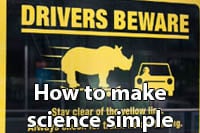
How could you ignore this message ?!?
Every now and then you stumble across an important message that is just conveyed perfectly.
we were in Melbourne last week for another PwC 21st Century Minds workshop and couldn’t help yet again but notice they bold yellow and black signage at every Yarra Tram stop in the city centre. A simply brilliant blend of science communication made simple!
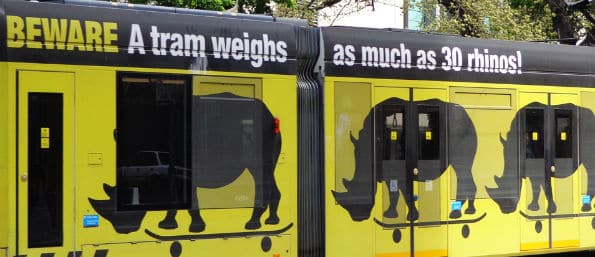
Yarra Tram rhino signage: an eye-catching that tells the message perfectly!
Such a clear message… watch out! Straight away you clearly understand that a rhino is something big and is something to stay away from if it’s charging! You can imagine it quickly and understand that you’d get hurt if you don’t get out of the way… and you can especially picture this if something 30 times bigger than a rhino hit you too! This is where the simplicity in this message works; you’ve no idea how heavy a tram is but you’ve got a rough idea of how heavy a rhinoceros is (2300kg – 1300kg or so, depending on species).
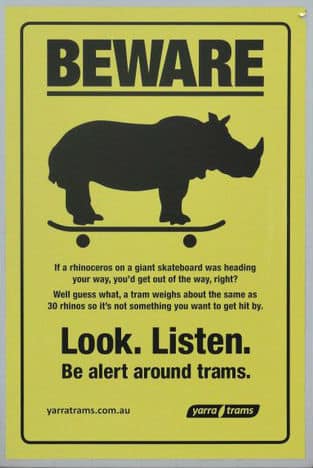
Rhino on a skateboard; a simple image that works!
Launched earlier this year, the ‘Beware the Rhino’ safety message aims to reduce & hopefully stop the pedestrian injuries and deaths that can occur on tramlines. The safety campaign by Yarra Trams was in partnership with Public Transport Victoria. Public safety messages have to work hard to cut through the storm of advertising you see on a daily basis and the yellow & black signs with the skateboard riding rhino certainly grab the eye. Surely if you had never seen this sign before you’d have to at least stop and have a little look!
So, is there anything in the signage that you could use for your science classroom? Absolutely! We teach force & movement at schools using simple materials and a skateboard is very much one of these items. You could emulate the concept in your classroom using a skateboard, a simple weight and a data logger with an accelerometer (or simply your smart device with an accelerometer app installed). With this apparatus, you could have the students look at acceleration, velocity, momentum and more. You could have students research the mass of an average rhinoceros, their top speed and therefore work out the forces involved in a rhinoceros hitting a stationary object at full charge. From this calculation, they could then work out the forces involved in trams moving about in a city (plus determine if they really are 30 times heavier than a rhino as well!). You could also use this image found within the trams as a discussion point for inertia:
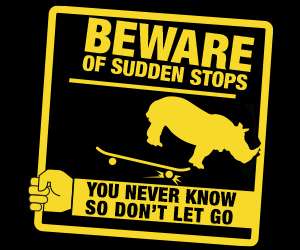
Yarra Tram rhino signage depicting inertia (image Yarra Trams)
At the heart of science communication is the importance of conveying messages. When constructing this safety campaign it would have been tempting to pull all the facts & figures into some sort of table but it would have lost its impact and potentially would have not done the public a favour. This is a great lesson for your students; they need to learn that they should not be so caught up in their scientific knowledge that they lose the ability to grab the attention of the audience.
The ability to convey just the right amount of information in the right format is critical as your students head out into the world. Why not use this advertising campaign as a precursor to creating a student STEM pitchfest? It will help your students to understand how to create information that delivers understanding… and maybe just inject a little human interest as well!
Happy teaching,
NEW Primary science teaching book!
“Be Amazing! How to teach science, the way primary kids love”

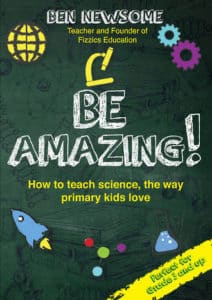

























Comments